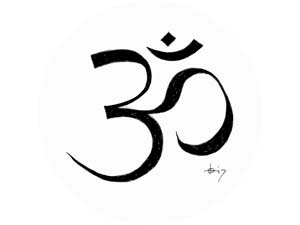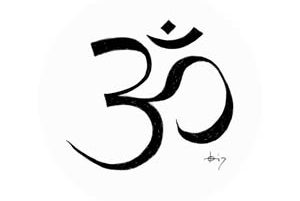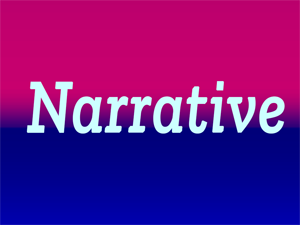Nivedita Yohana
Every civilization looks at animals, birds and sea creatures in its own unique way. They have been conferred in splendid forms in paintings, stories, art, literature and sculptures as companions of deities, as emblem of power, wisdom, and with other important attributes.
Friendly, loyal and graceful
Dr. Kumud Kanitkar in Ratnamanjusha says,
“The Romans saw animals as fierce creatures which had to be killed or controlled for human survival. The Greeks saw them as symbols of power living in a separate world of their own. But ancient Indians saw them as they should be seen — friendly, loyal and graceful.”
Here Kumud points out to the fact that Indians have always held onto the belief that animals and human beings can co-exist harmoniously.
Since animals and birds play a vital role in Human life, they are revered and respected. They play an important part in various aspects of human life such as food, entertainment, trade, clothes and ecological balance. Due to many advantages derived from animal world, humans have often affiliated animals to the divinities and graced them with supernatural power.
Their perception by human beings has changed from time to time
Dr. Kanitkar has conducted a comprehensive study of animal sculptures and themes in Indian culture says
“Animals have not undergone any major changes in their shapes or behaviour, but their perception by human beings has changed from time to time.
The depictions of animals, birds and sea creatures in sculptures, paintings and arts like dance and fabric printing as well as architecture are expressions of human imagination and are often used as religious symbols of power, grace, beauty, dignity, opulence and wisdom.”
India’s fables concerns evocation of the metaphors of gods, demons and various other human attributes. The serpent, or snake, is one of the oldest and most widespread mythological symbols.
Snakes have been associated with some of the oldest rituals known to mankind and represent dual expression of good and evil — the cosmic serpent that entwines the whole world, to hold it together. This concept has captivated the orient and is seen in massive sculptures in Thailand and Cambodia.
Besides Snake, there are several other animals that are revered in Indian culture — a elephant (Airawat), horse (Uchaisravas), monkey (Kapi) and cow (Kapila) are also included during the molding of fables/stories in the furnace of culture.
Animals are given unique attributes/ traits which carved a place of their own both in fables as well as in myths. All these animals accomplished the stature of being divine comrades of the gods and thus were considered an essential part of the human as well as the spiritual world.
Equal partners who share the earth
Most significantly, they proved that animals, birds and sea beings were considered an intrinsic part of the human universe and as equal partners who shared the earth.
Each animal, stylized according to the form of the deity with which it was related, became an instantly identifiable theme and was sometimes worshipped through dance, music, paintings and sculptures.
Ganesha and Hanuman
Hinduism worships many animal-related deities.
The most popular among these are Ganesha with an elephant head and Hanuman, with a monkey body.
Ganesha is the auspicious remover of impediments, the god of wisdom and auspiciousness while Hanuman stands for strength, single-minded devotion and power.
Every deity embodies one or more feature of divinity and thus attended by one or more animals to ‘complete’ the relationship of gods, humans and animals. Over a period of time, the Vahanas or vehicles of gods and goddesses came to typify their traits or a means of instantly recognizing the deity which could be conferred in various poses, forms or aspects.
Hanuman is seen as an ideal combination of shakti (“strength, heroic initiative and assertive excellence”) and bhakti (“loving, emotional devotion to his personal god Rama”). For wrestlers, he has been the patron deity of martial arts.
He is stated to be a gifted grammarian, meditating yogi and diligent scholar. He represents the human excellences of temperance, conviction and service to a cause.
Animals and birds: symbols of the duties and powers of gods
For instance, any goddess accompanied by a tiger or lion is straightaway recognized as Durga, the goddess of war. Archaeologists have relied on animal sculptures in order to research sculptures of divinities as well as the historical period during which they were created. Animals and birds became symbols of the duties and powers of gods and above all, they were the creative manifestation of the human perception of the animal world.Animals and birds: symbols of the duties and powers of gods
Sculptures in Ajanta, Ellora and various schools of paintings including the Maithili, the Kantha, the Mughal miniature and even folk style Warli paintings feature elephants. Priceless textiles use the motif to celebrate good fortune.
Similarly, other animals and birds symbolize ideas and concepts. Some important symbols:
Lion or Tiger
The lion or tiger, the companion of Durga, the goddess of power. They help her in destroying the demons of darkness and ensure the victory of good over evil every year during Navarathri Festival – a Hindu festival that spans nine nights and is celebrated every year in the autumn link.
Cow and bull
Krishna, the eternal lover, is a cowherd and attracts cows with his divine flute music.
Shiva with the snake around his neck, the lord of the Himalayas, rides the powerful Nandi or bull who symbolizes power and strength.
Swans, peacocks, cuckoo, cranes and other birds…
Saraswati, the beautiful river goddess of knowledge and arts, is accompanied by swans or peacocks — both symbolizing grace and beauty.
Karthikeya, the son of Shiva and Parvati, has a peacock with him.
Birds and animals in Indian culture are harbingers of seasons — they announce coming events and changing climate.
They are also messengers between lovers. Just the koel (Cuckoo) sings for springtime, cranes and other birds flying among black clouds symbolize rain. The romantic Krishna himself is portrayed as the dark clouds which rain and bring plentitude on a parched, thirsty land.
The swan is a messenger in the immortal love story in many of the stories. The graceful swan also represents the soul and its spiritual freedom. Parrots carry love messages between separated lovers. In all paintings and art of India, birds and animals are presented as an integral part of the human world — as graceful, loving, loyal companions of human beings.
Wonderful bond between animals and human beings
In literature like Ramayana, Mahabaratha, Panchatantra, Hitopodesa, Jataka tales shares stories with wonderful bond between animals and human beings with moral implications. Animals and birds become devices to convey the philosophy of religion. Indians are firmly rooted in the belief that birds, animals and human beings — as everything else — are vital part of divinity. This is the core conviction of all Indian religious and cultural thought and thus, all forms of life must be valued similarly.
Indian culture — which is a confluence of Hindu, Buddhist, Jain and Sikh thought recognize the right of all living beings to co-exist peacefully and to be loved and cherished for the welfare of the world. This is perhaps why animals are depicted as companions of gods and goddesses. Kings and emperors of Indian history chose different animals in their emblems.
Festivals to pamper animals
Several festivals of India are observed to pamper animals. Animals have been made heroes in mythology and folk literature. Powerful rulers also encouraged artists at their courts to promote animal motifs in their art and architecture.
India is a growing economy and is the world’s fifth-largest economy by nominal GDP which houses IT hubs, resources and manpower which are in great demand by tech giants.
While science and technology are booming in India, myths and legends also exist in parallel. One thing does not need to exclude the other.
This juxtaposition of science and fables involving deities, flora and fauna demonstrates the perpetual relevance of animal symbols, myths, legends, deities in the context of modern human existence. It helps combat existential crisis or questions; a modern man may abruptly bump into.
- Chowdhury, R., Vishnusharma, & Roy, N. S. (2017). Panchatantra. Gurgaon: Penguin Books India.
- Das, V., & Joshi, J. (2002). The Jataka tales. New Delhi: Madhuban.
- Hitopadesha: An ancient, fabled classic. (2002). Bombay: Jaico Pub. House.
- MacIntyre, C.S. (1995). Animals in India: Folklore, Myth, and Religion. Fulbright Hays Summer Seminar Abroad 1995 (India). Place of publication not identified: Distributed by ERIC Clearinghouse.
- O’Flaherty, W.D. (1981). Sexual metaphors and animal symbols in Indian mythology. Delhi: Motilal Banarsidass.
- Kanitkar, Kumud (2017) Ratnamanjusha, Jnana-Pravaha Research Journal No XX 2016-2017 http://independent.academia.edu/KumudKanitkar
- Verma, S.P. (1999). Flora and fauna of Mughal art. Mumbai: Marg Publications.
- Walter, M.N., & Fridman, E. J. (2004). Shamanism: An encyclopedia of world beliefs, practices, and culture. Santa Barbara, CA: ABC-CLIO.











